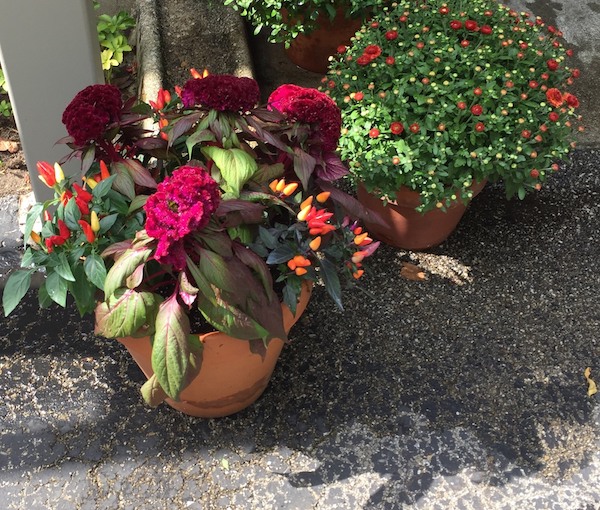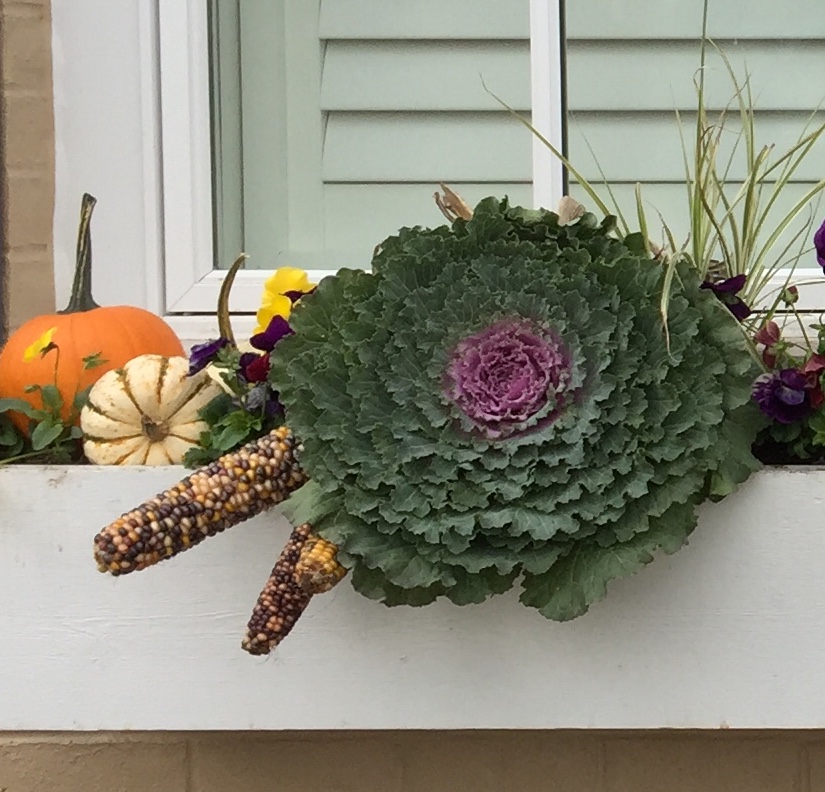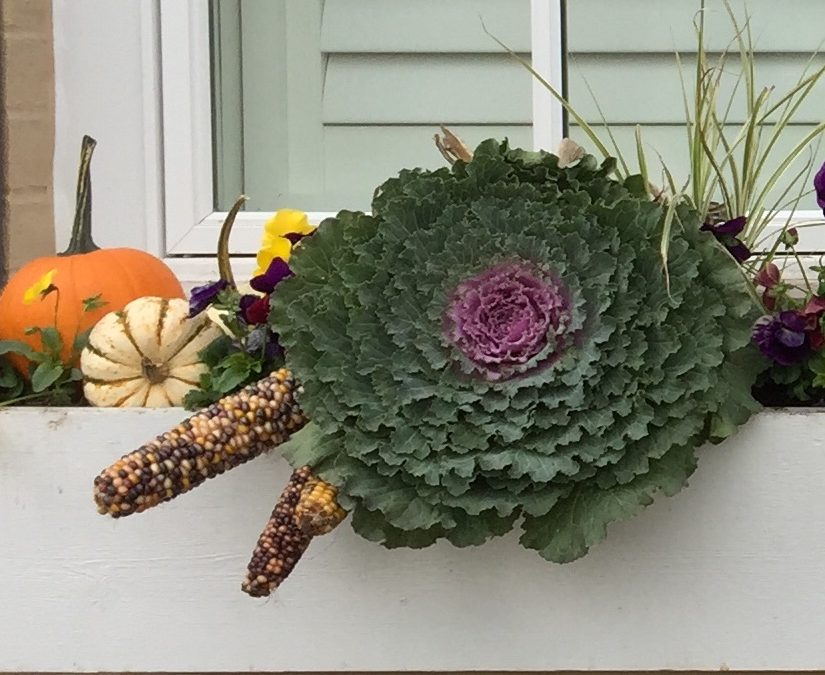
If squirrels are a problem, use faux pumpkins to decorate fall pots. Photo courtesy Susan Messenger/Holeman
If summer has taken its toll on your pots of ornamental flowers, change them out for fall splendor.
Garden centers are filled with Tuscan kale, tangy mustard and colorful chard for beautiful edible containers, and ornamental cabbage for looks.
“I like bolder colors, jewel tones, blues and purples to complement orange,” said Susan Messenger, maintenance supervisor at Mark M. Holeman. She also pots up seasonal containers for Holeman clients.

The bold colors of celosia mix with ornamental peppers for a fall pot. PHoto courtesy Susan Messenger/Holeman
Cold-tolerant pansies, million bells (Calibrachoa), petunias, ornamental peppers, millet, rudbeckias, mums and asters also are in garden centers waiting for spots in your pots. Proven Winners has info on more cool-season annuals, but some may be harder to find in garden centers.
Messenger relies on perennials, too, for fall color. Native coral bells (Heuchera) and the silver blue globe thistle (Echinops banaticus) are among her favorites.
She adds more color and interest with pumpkins and gourds. “I use artificial pumpkins where the squirrels are really bad,” she said. Brightly painted sticks and twigs, the annual red fountain grass and ornamental corn also adorn her fall containers.
A lot of people use dried corn stalks as centerpieces in pots, but she doesn’t recommend that. The wind can dislodge the stalks, which can act as a sail, possibly knocking over the container.
Water fall-planted containers as needed. No need to fertilize.

Ornamental corn and mini pumpkins mix with a rosette cabbage for a fall themed window box. Photo courtesy Susan Messenger/Holeman
Preparing pots for winter
Pull out the summer plantings. If the pots are terra cotta, empty them and turn them upside down, if left outdoors. Or, move terra cotta pots to where they will not freeze. If you do that, you may not have to empty the potting mix. However, if disease or insects were a problem this summer, dump the dirt and use fresh potting mix next year.
Fiberglass, heavy duty plastic, concrete and some ceramic containers can be left outdoors filled with potting mix through winter. Ceramic containers should be labeled as frost tolerant. Ceramic pots also can be emptied, turned upside down and left outdoors. Or cover filled pots upright with a board or plastic bag. It’s the freezing and thawing of the wet potting mix that causes porous pots to deteriorate.
If you plan to use one of the pots for winter arrangements, keep an eye on temperatures. You don’t want the potting mix to freeze because it makes winter arrangements impossible to build without thawing it.
For assistance with your ornamental containers, contact a Holeman professional.

